The Vale do Pati is in Brazil’s renowned National Park – Chapada Diamantina. It is a one-of-a-kind trek that delivers incredible landscapes, towering waterfalls, and deep, green canyons as far as the eye can see.
A unique aspect of the Vale do Pati is that about 50 people live in the valley full-time. These families have survived in the valley for generations, at first mining for diamonds and later working coffee farms.
At its peak population, 400 families called the valley home. Today, the 11 remaining families open their homes and properties for trekkers to take shelter, eat a hot meal, and enjoy a shower while on the trail.
There are a couple of ways to hike the Vale do Pati. For the purpose of this blog, I detail our experience hiking for 4 days, spending 3 nights, and covering 27 miles (43 km) in the Vale do Pati.
I describe everything to know before and during the trek to help prepare future hikers for the epic trekking experience in Brazil’s Vale do Pati.
If you enjoy multi-day hikes, the Vale do Pati has to be on your trekking bucket list.
Chapada Diamantina National Park
Chapada Diamantina National Park is one of Brazil’s most famous national parks. Formally founded in 1985, it attracts national and international visitors to explore its 375,600 acres of pristine nature. The park is managed by Brazil’s leading environmental agency – ICMBio.
About ICMBio
Instituto Chico Mendes de Conservação da Biodiversidade (ICMBio) or the Chico Mendes Institute for Biodiversity Conservation is charged with the administrative management of 334 specific areas of environmental conservation in Brazil.
It is named after Chico Mendes, who was an environmental activist known for his defense of the Amazon in Brazil. ICMBio aims to enhance park visitors’ knowledge and experience while protecting the integrity and biodiversity of the natural environments under its management.
Notable parks in Brazil under the jurisdiction of ICMBio include Iguazu Falls, Christ the Redeemer in Rio de Janeiro, and Fernando de Noronha Marine National Park.
The Chapada Diamantina National Park contains three biomes – Atlantic Rainforest (Mata Atlantica), Savannah (Cerrado), and Caatinga. The last biome, Caatinga, is an Indigenous word from the Tupi-Guarani people meaning “White Forest.” It is a biome found exclusively in Brazil, covering 10% of the country.
Waterfalls are one of the park’s main draws. There are 33 spread across the park.
The tallest is the Fumaça Waterfall soaring 1,280 ft (390m). The Vale do Pati claims the second-tallest waterfall. It is appropriately named Cachoerião meaning Big Waterfall in English. Cachoerião has a height of 918 ft (280m).
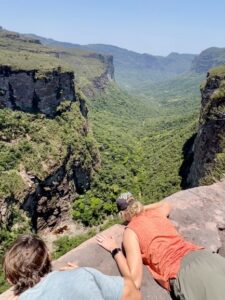
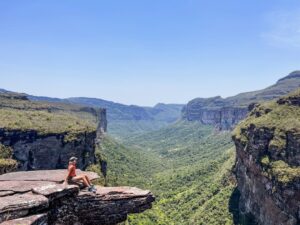
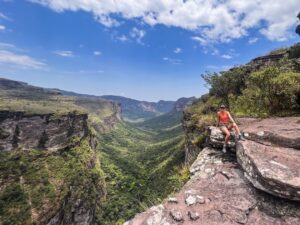
A very dry Cachoeirão Waterfall
More things to do in the park
Besides the Vale do Pati, Chapada Diamantina has several postcard-worthy sites.
These include Vale do Capão (hiking and waterfalls), Morro do Pai Inácio (short sunset hike), Gruta da Pratinha and Azul (swimming in caverns or caves), Poço Azul and Encantado (Clear, blue natural pools for swimming), and Fumaça, Mosquito, Buracão Waterfalls.
Beyond hiking, popular activities in the park include rock climbing, mountain biking, and swimming in caves, natural pools, and rivers.
Where is Chapada Diamantina and Vale do Pati
Chapada Diamantina National Park is located in the Serra do Espinhaço. Serra is like the commonly used Spanish word Sierra meaning mountain range.
The Serra do Espinhaço extends north and south from Bahia to Minas Gerais, Brazil.
This map shows Chapada Diamantina’s most important mountains, caves, waterfalls, natural pools, and rivers.
As you can see on the map, some sites are very spread out or can only be accessed through specific towns.
The Vale do Pati is found in the central region of the Chapada Diamantina National Park.
Cities around the national park
The city of Lençois is where many tourists base themselves when visiting Chapada Diamantina. It is the largest city bordering the park and, as a result, has the most robust tourism infrastructure.
Other municipalities bordering the park include – Palmeiras, Andaraí, Ibicoara, Itaetê, and Mucugê. ICMBio, the agency that administers the national park, reports that 38 trails connect these towns to the park.
Unlike most national parks in the U.S. that welcome visitors through grand, Disney-like entrances strictly controlled by park officials, there is no monitored entrance at any of the 38 entry points to Chapada Diamantina.
To begin the Vale do Pati trek, some hikers will spend a night in Palmeiras before entering the park through the tiny village of Guiné.
How to Get to Palmeiras or Lençois
Bus from Salvador
The closest metropolitan city to Chapada Diamantina is Salvador, Bahia. The most affordable way to reach Palemeiras or Lençois is by bus from downtown Salvador.
I recommend the Rápido Federal/Guanabara bus company.
This is the bus line that we took from Salvador and even though it is an 8-hour journey, the bus is comfortable and safe.
We snagged an overnight bus with the same company on the way back to Salvador from Palmeiras and the “LEITO” seats were amazing, we slept most of the ride.
Depending on the time, day, and seat class, prices range from R$135 to R$327 each way. The bus makes one stop at a convenience store/restaurant for food and a bathroom break. There is a bathroom on the bus too.
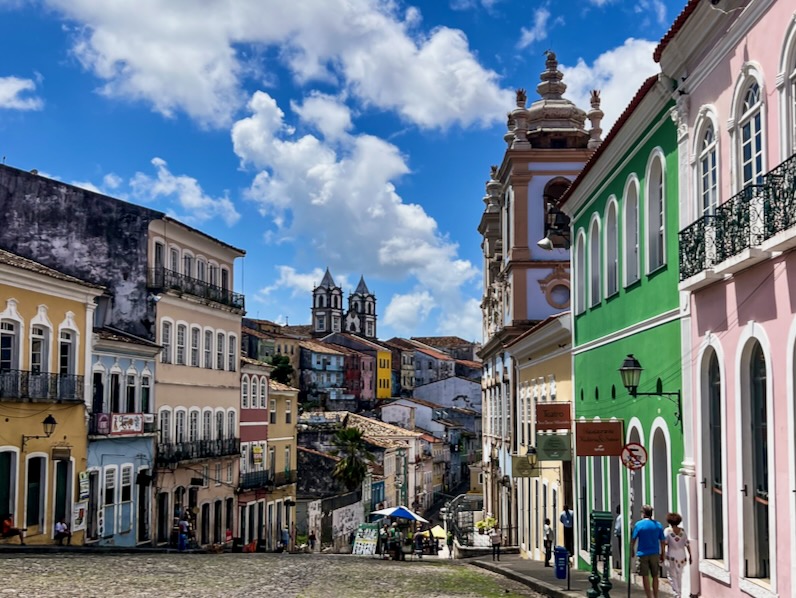
Salvador’s Historic City Center
Bus stations in Salvador and Palmeiras
The bust station (Terminal Rodoviário de Salvador) in Salvador has many food options (including Mcdonald’s), a grocery store, and a pharmacy for any last-minute purchases. I recommend eating a good meal and grabbing snacks and water before the bus.
As always, be aware of your surroundings and your belongings at bus stations. The Salvador bus station was surprisingly organized and clean. Arrive with enough time to locate where your bus will be collecting passengers.
The bus station in Palmeiras consists of just a ticket sales office and a few benches.
Flights to Lençois
If you get car sick or don’t like long bus rides, there is a regional airport in Lençois – LEC.
As of June 2024, all flights to LEC originate from Belo Horizonte’s CNF airport and are only operated by Azul Airlines on Tuesdays, Thursdays, and Sundays.
Rental Car
A rental car is unnecessary if you are only doing the Vale do Pati trek since your guide should provide transport to and from the park.
Palmeiras’ “downtown” area is extremely small – just one plaza. Plan on walking everywhere once you arrive.
If you are also planning to spend additional days in Chapada Diamantina National Park before or after the trek or are traveling with a large group, a rental car might be worth the cost.
We always use Localiza for car rentals in Brazil.
Where to Stay in Salvador and Palmeiras
Salvador
Salvador is a large, sprawling city. If you are only spending a night in Salvador before traveling to the Vale do Pati via bus, I recommend staying near the bus station and the Salvador Shopping mall.
This area has many credible hotels like the Hotel Intercity Salvador and Mercure Salvador Boulevard. If staying here, I don’t recommend walking to the bus station even though it appears very close on the map. Take a quick, cheap cab or Uber from the hotel.
Brazilian malls have the unusual reputation of being sophisticated, comfortable places to hang out and eat in addition to shopping. The Salvador Shopping mall is no exception. It’s a reliable place to grab a good meal the night before the bus ride.
Looking for a classic burger? The chain Madero Steak House has some of the best quick-casual burgers in Brazil.
If you plan on spending more than 1 night in Salvador and also want to do some sightseeing, check out my blog – 3 Days in Vibrant Salvador: Brazil’s First Capital. I detail the city’s best neighborhoods, restaurants, things to do, and hotels.
Palmeiras
There are only a handful of simple lodging options in Palmeiras.
I recommend the lovely Pousada Caminhos da Chapada. It’s very affordable, clean, and comfortable.
The family that runs the pousada is so sweet and kind. The included breakfast the morning before we began the trek was phenomenal – and made especially for my husband and me.
We left a bag with the pousada while in the Vale do Pati. And while we weren’t staying with them when we returned from the trek, they allowed us to use the shower and bathroom for a small fee before our overnight bus back to Salvador.

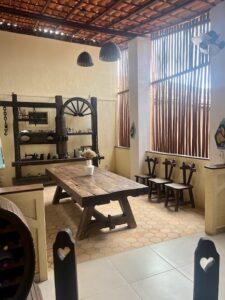


Staying in Lençois? View hotel options, pricing, & availability.
What to bring on the Trek in Vale do Pati
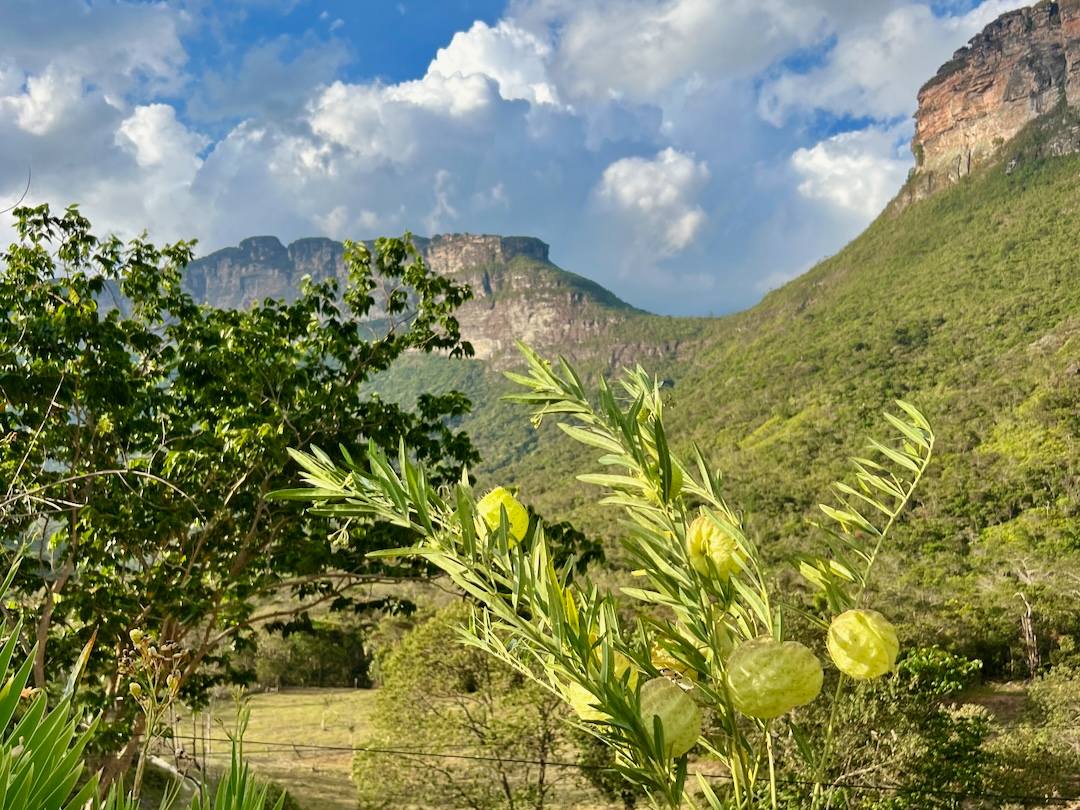
I have the hardest time limiting what I bring in my pack on multi-day treks. After every trek, I promise myself I will carry less next time.
Since meals and sleeping arrangements are usually included with a guided trek through the Vale do Pati, hikers only need to carry clothing and any personal items they need on the trek.
This is what the ideal packing list may include for 4 days in the Vale do Pati. Depending on your level of comfort wearing dirty clothes you may bring more or less but this is a starting point.
Vale do Pati Packing List
- 2 lightweight shirts
- 2 hiking shorts/pants/leggings
- 1 long sleeve sun shirt
- 2 pairs of socks
- 1 lightweight rain jacket
- 1 camp hang-out/sleeping outfit
- 1 sandals (Havaianas or Arizona rubber Birkenstocks)
- 1 preferred hiking shoe
- Sunhat
- Sunglasses
- 1-2 bathing suit
- 2 sports bras
- Underwear
- Camera/GoPro
- Headlamp
- Book or deck of cards
- Camelback water pouch
- Small packable backpack
- Portal battery charger with cords (some houses have charging stations for hikers)
- Personal medications + hygiene items
- Hand sanitizer
- Personal snacks like trail mix or protein bars
- Sunscreen
- Hiking poles
- Sunbuff/bandana
- Cash in Reais for buying snacks, beer, and drinks
- Plastic bags/Ziplock for wet clothes
- Small dry bag to store phones/passports in case of rain
- Rain cover for the pack
Choosing a guide and why it is important in Vale do Pati
You will be spending all day, every day, on the trail with your guide. Trust your instincts when deciding on which agency best fits your specific wants and needs.
We chose Chapada Trekking as our guide for a couple of reasons.
- Local Company – I wanted to use a local company. While Chapada Trekking leads treks all over the world, they are based in Chapada Diamantina.
- Informative website – Your guide’s website is your first introduction to the company. I appreciated how Chapada Trekking openly lists scheduled trekking dates, prices, and itineraries.
- Customer Reviews – Chapada Trekking has stellar customer reviews on Trip Advisor.
- Dates – Ability to handpick our dates based on what worked for us.
Other reputable guides we interacted with on the trail included PlanetaEXO and Chapada Soul. Both websites have English translations.
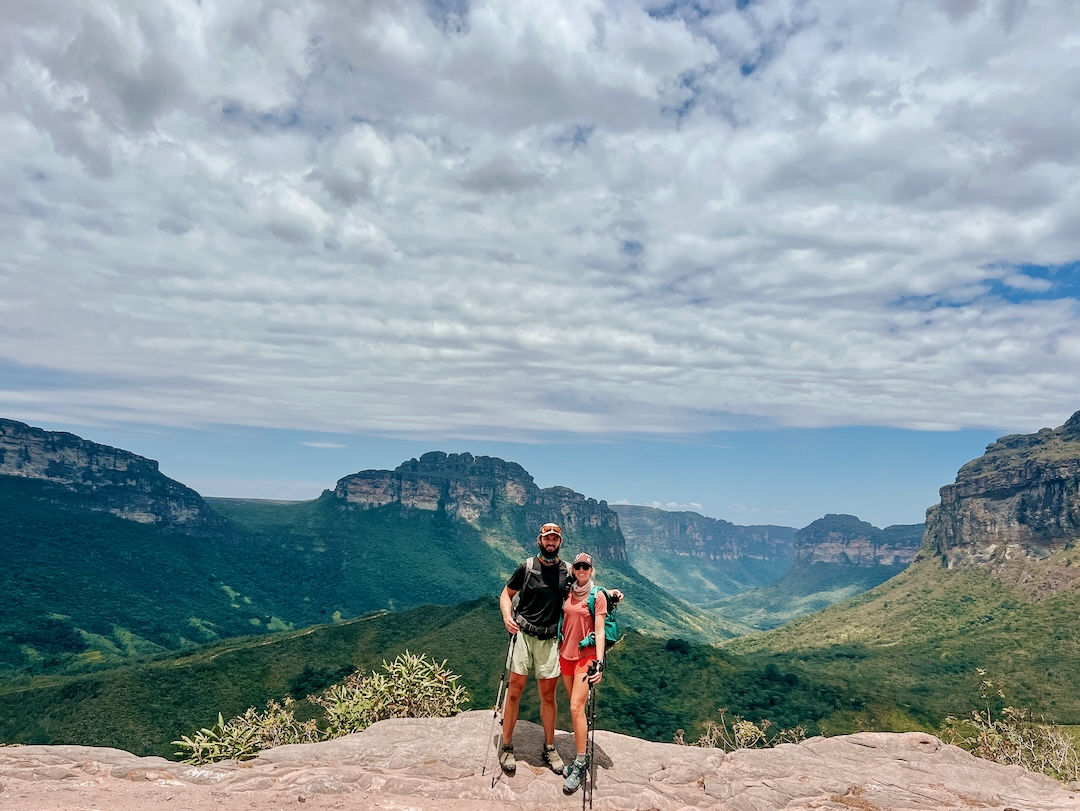
Photo taken by our awesome guide
Do you need a guide in the Vale do Pati?
It is not required to have a guide or to sleep in the natives’ houses while in the Vale do Pati. However, by doing so you are directly supporting the community that cares for and maintains the trails in the valley.
Plus, with a guide, you learn so much more about the valley’s plants, animals, and history. It is like having access to Google for any questions that pop up during the trek.
The guides also know where all the best viewpoints are and many are excellent photographers – more than happy to take your picture throughout the trek.
We noticed hikers without guides being viewed as suspicious or even up to no good within the park, even if that wasn’t the case. None of the trails within the valley are well marked and there is zero cell reception. If hiking without a guide, it is necessary to have a GPS or the ability to read a map.
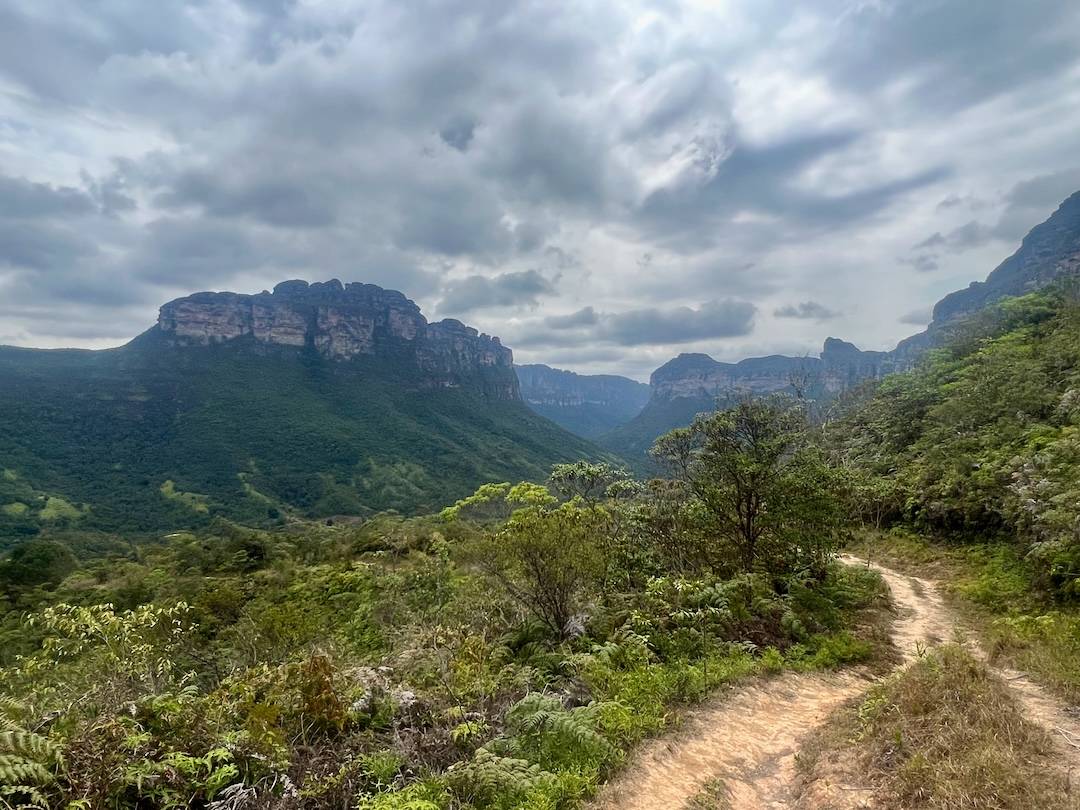
Fire Danger in the Vale do Pati
The biggest threat to the Vale do Pati is fire. Bonfires or campfires are illegal in Chapada Diamantina and the Vale do Pati. This is one reason guideless hikers earn a negative reputation.
During our trek, we encountered several extinguished bonfires next to tents from the previous night. Our guide would always make a note of the location and then dismantle the rocks and logs used in the bonfire to discourage another bonfire from being made in the same place.
90% of the fires in Chapada Diamantina are started illegally by humans.
The valley’s first defense against these fires is a volunteer fire brigade. They must rely on costly air support to monitor and prevent the fires from burning out of control.
During our 2nd day on the trail, a fire started north of the Vale do Pati but was affecting our air quality. Throughout the day we saw airplanes monitoring the situation. Luckily by the 3rd and 4th day, the smoke was less prevalent.
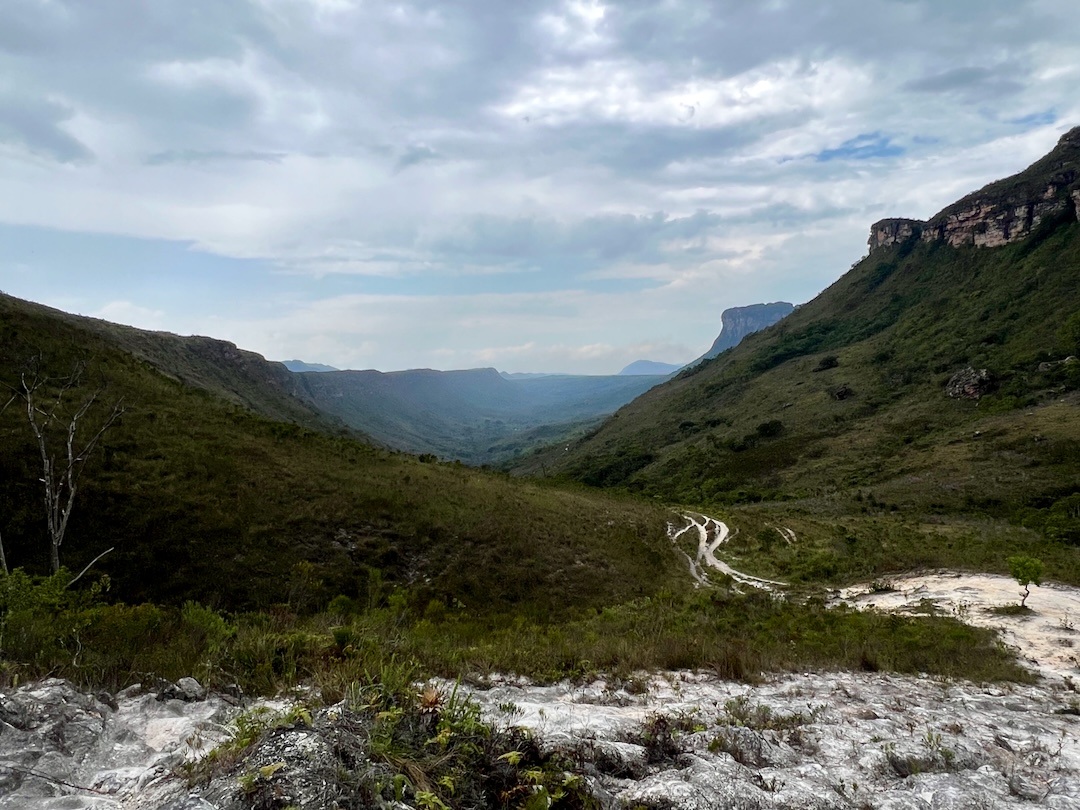
Smoke filled horizon in the Vale do Pati
Daily Trek Highlights in Vale do Pati (Photo Diary)
DAY 1: Arrival at trailhead | Crossing the Gerais do Rio Preto plain | Rampa Viewpoint | Lunch at Igrejinha | Hike to Lajeado Waterfall | Dinner and sleep at Igrejinha
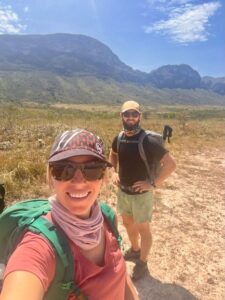
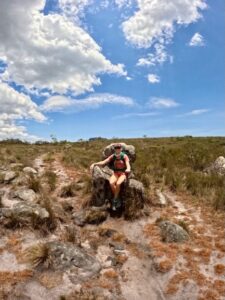

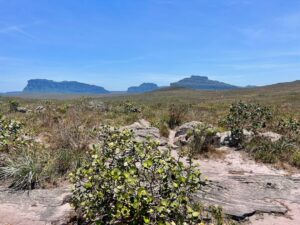
Gerais do Rio Preto Plain
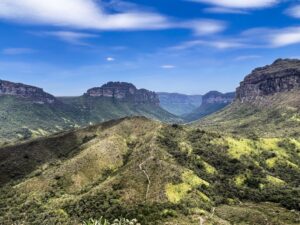
Rampa Viewpoint – Postcard of Vale do Pati
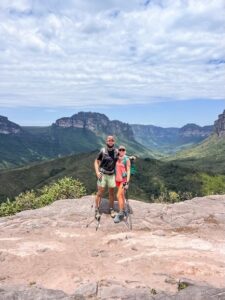
Rampa viewpoint
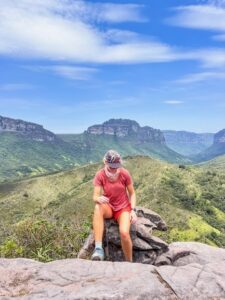
Rampa Viewpoint
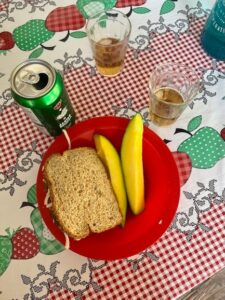
Lunch at Igrejinha
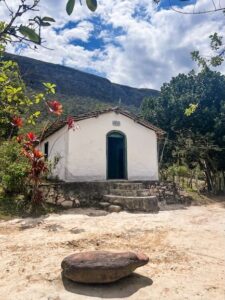
“Igrejinha” Native House
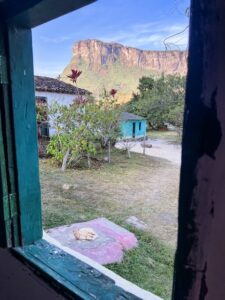
“Igrejinha” Native House

Sunset at Igrejinha

Lajeado Waterfall
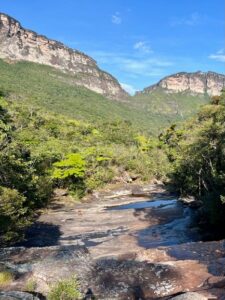
Lajeado Waterfall

Bedroom at Igrejinha
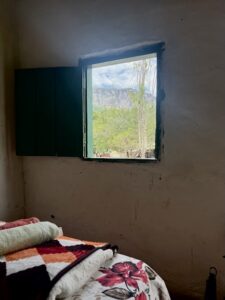
Bedroom View at Igrejinha
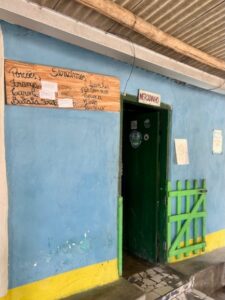
Market at Igrejinha
DAY 2: Breakfast at Igrejinha | Hike to the top of Cachoeirão Waterfall | Lunch at Waterfall | Return hike to Igrejinha | Dinner and sleep at Igrejinha
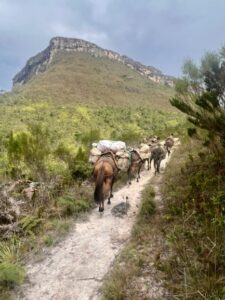
Horses carrying goods

Views from the top of Cachoeirão Waterfall
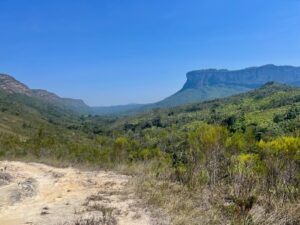
Trail to Cachoeirão Waterfall
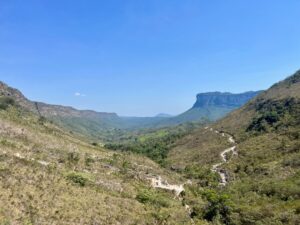
Trail to Cachoeirão Waterfall
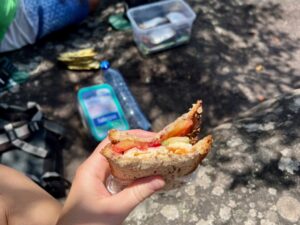
Lunch on the trail

Top of Cachoeirão Waterfall
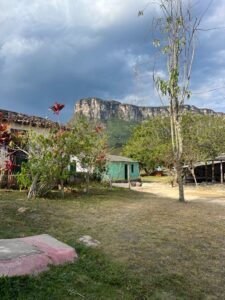
2nd Night at Igrejinha
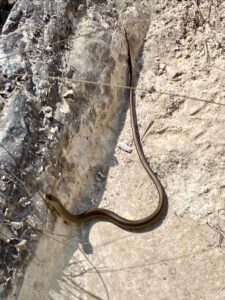
Snake on Trail to Cachoeirão Waterfall
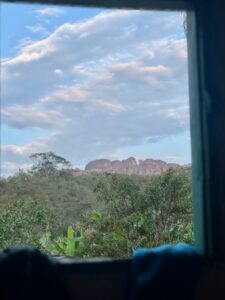
2nd Night at Igrejinha
DAY 3: Breakfast at Igrejinha | Hike to Pousada do Wilson | Hike through Gruta do Castelo | Views from Morro do Castelo | Hike to Dona Raquel’s for dinner and sleep
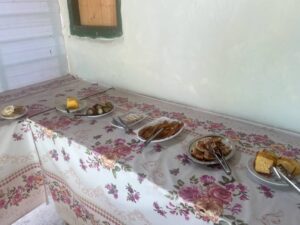
Breakfast at Igrejinha
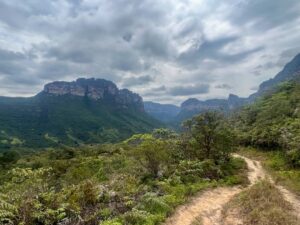
Trail to Morro do Castelo
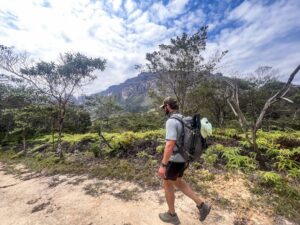
Trail to Morro do Castelo
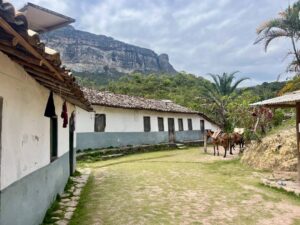
Mr. Wilson’s House
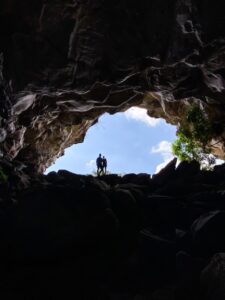
Gruta do Castelo
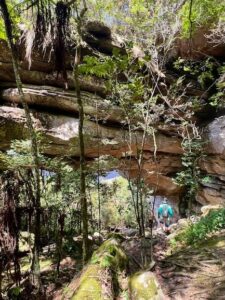
Outside the Gruta do Castelo
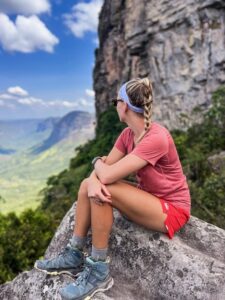
Views from Morro do Castelo
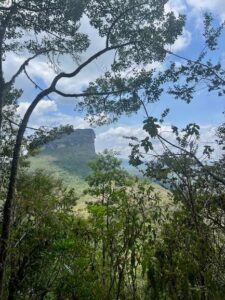
Hike to the top of Morro do Castello

Morro do Castelo Views
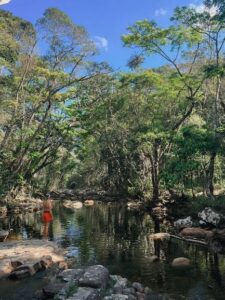
River at the trailhead to Morro do Castello
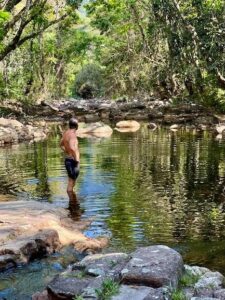
River at the trailhead to Morro do Castello
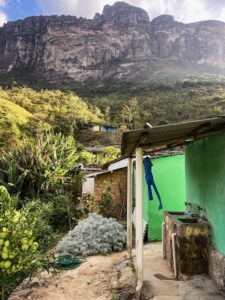
Dona Raquel’s Home

Dinner at Dona Raquel’s House
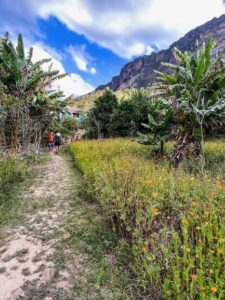
Dona Raquel’s Home
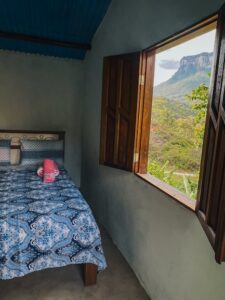
Room at Dona Raquel’s house
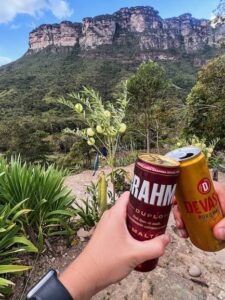
Reward after Morro do Castello Hike
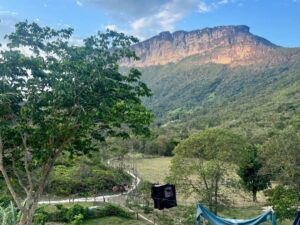
Views at Dona Raquel’s House
DAY 4: Breakfast at Dona Raquel’s house | Hike to Bananeiras, Funis, and Altina Waterfalls | Lunch at Igrejinha | Hike to the Rampa viewpoint | Cross Gerais do Rio Preto plain | Return to Palmeiras

Funis Waterfall
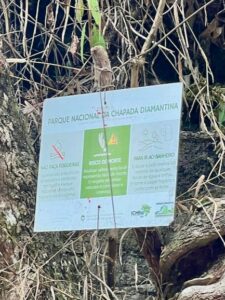
Chapada Diamantina Park Rules Sign in Vale do Pati
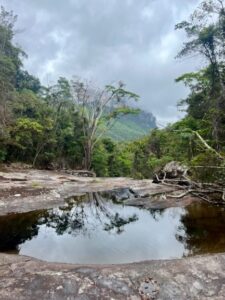
Semi-dry base of waterfall
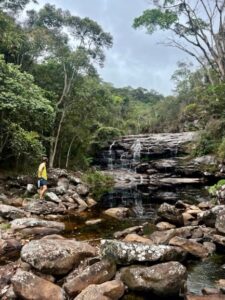
Bananeiras Waterfall with little water flowing
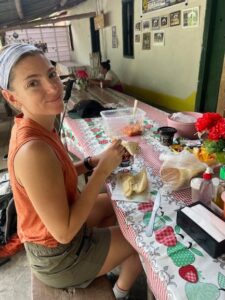
Making lunch at Igrejinha
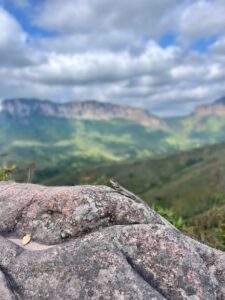
Last view of the valley from Rampa Viewpoint
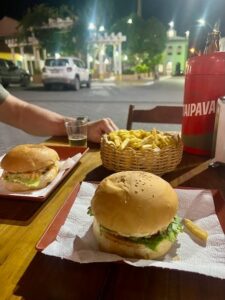
Post-trek burgers in Palmeiras
Meals while Trekking in Vale do Pati
Hikers staying at the natives’ houses along the trail eat very well.
Breakfast
Breakfast at the houses was always a combination of fried or scrambled eggs, fruit, breakfast cake, tapioca, pão de queijo (cheesy bread), fresh bread, cold cuts of ham and cheese, fresh juice, and coffee.
Lunch
Lunch is (usually) provided by the guide. They carry the food and prepare it for hikers. Sometimes lunch is eaten at a viewpoint on the trail or at the natives’ houses.
Our lunches tended to consist of canned chicken or tuna salad, bread to make sandwiches, cheese, fruit like apples, pineapple, or mango, and cookies for dessert.
Dinner
At dinner time, hikers can expect nothing short of a feast. All dinners included the Brazilian diet staples of beans and rice, a protein like roasted beef or baked chicken, different types of vegetables including squash, potatoes, and eggplant, fruit, and always a dessert.
Snacks
Some of the houses offer coffee and cake in the afternoons for a snack.
Igrejinha and Dona Raquel have small markets or snack bars where hikers can buy beer, sodas, bottled water, and some nonperishable food items.
We brought a large bag of trailmix and a handful of protein bars in case lunch wasn’t enough. I highly recommend a bag of M&M trail mix – its always a delicious treat on long trail days.
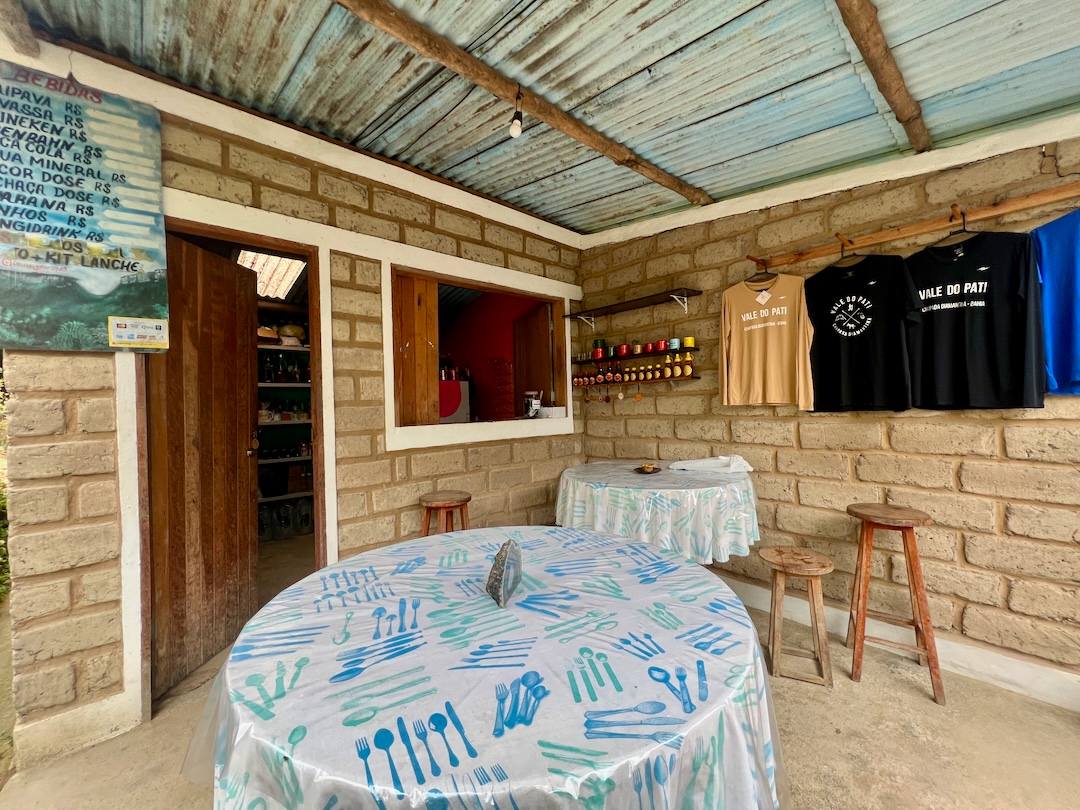
Snack bar area at Dona Raquel’s house
The best time of year to hike the Vale do Pati
Trekking in the Vale do Pati is a year-round activity!
Like many destinations in Brazil, the most important consideration when deciding what time of year is best is knowing when the wet and dry seasons occur.
DRY SEASON: The dry season is from May through October. Expect clear skies and “cooler” weather.
WET SEASON: The wet season is from November through April. More rain and cloudy skies but fuller waterfalls.
If seeing the park’s waterfalls in all their glory is important to your trek experience, then you will want to visit well into the rainy season.


Vale do Pati in November
Our trek was in early November and the valley was still very dry, as the first rains of the rainy season had yet to arrive.
The smaller waterfalls like Bananeiras and Lajeado still had falls worth seeing but the Vale do Pati’s landmark waterfall – Cachoeirão was totally dry.
When it’s not dry, Cachoeirão has 16-20 different falls.
While we visited on the cusp of summer, trekking in the Vale do Pati was some of the hottest trekking I have done. Daily highs reached into the 90s. One of the most brutal parts of the trek is crossing the Gerais do Rio plain because there is practically no relief from the sun.
Peak Trekking Times
Holidays like New Year’s Eve and Carnival are popular trekking times in Brazil.
Many trekking agencies run specials during these periods. Our guide told us it is common to have over 300 people in the valley to ring in the new year. Meal lines at the houses could be 60 people deep during the festivities.
We experienced little crowding during our trek. At Igrejinha only 4 other trekkers were spending the night there with us. We rarely had traffic jams on the trail or congestion at viewpoints.
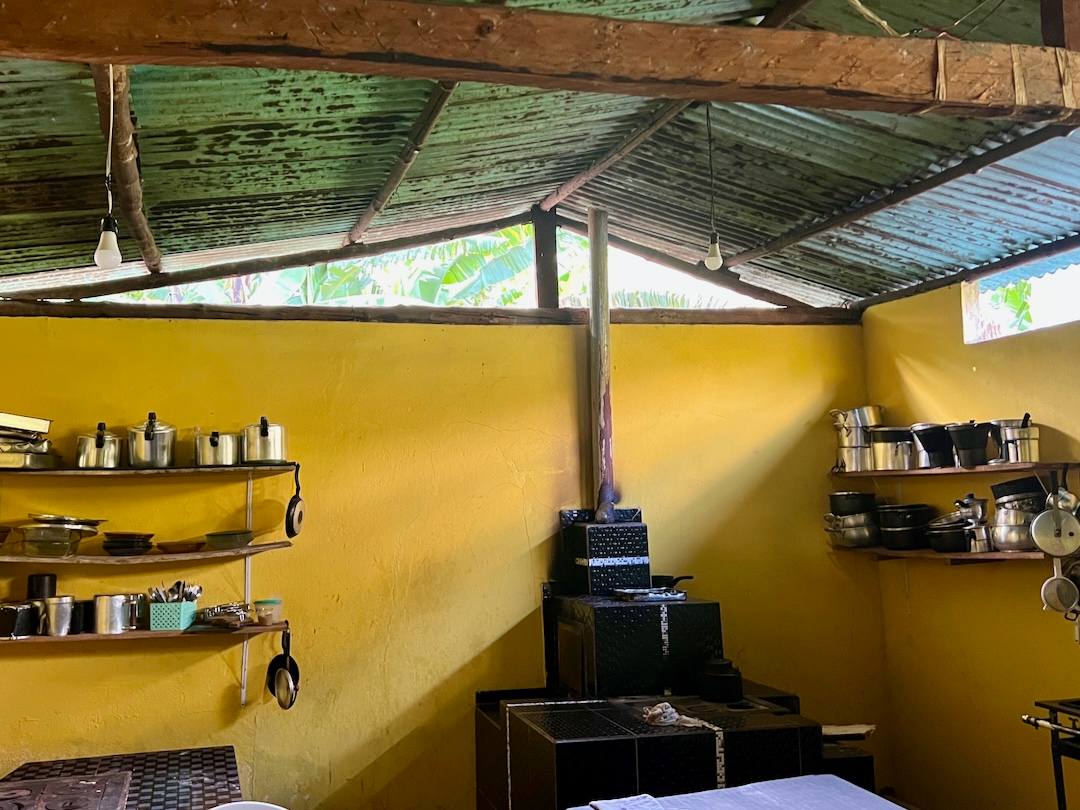
Casa dos Nativos Kitchen
How hard is the Vale do Pati 4-Day Trek
Mileage of Vale do Pati Trek
Vale do Pati’s daily trekking distances are relatively short. During the 4-day trek, expect to hike 27 miles or 6.75 miles per day. These numbers are lower than one of the most popular South American treks – W Trek in Patagonia which covers over 55 miles across 5 days.
If you want a more challenging trek in Chapada Diamantina, Chapada Trekking and other agencies offer longer treks in the Vale do Pati. However, the longer treks tend to be spread across more days (between 5 and 8 days).
Heat in the Vale do Pati
Even though the mileage wasn’t very long, the days were very hot. Each day of our trek saw highs in the 90s. Without a doubt heat like this puts an extra strain on the body.
Altitude in Vale do Pati
Effects from altitude gains are not a serious concern on the trek. Our biggest elevation gain was 1600ft on day 3.
However, there are a few very steep climbs. Notably, the hike to Morro do Castel on day 3 and the hike to the Rampa Viewpoint on Day 4.
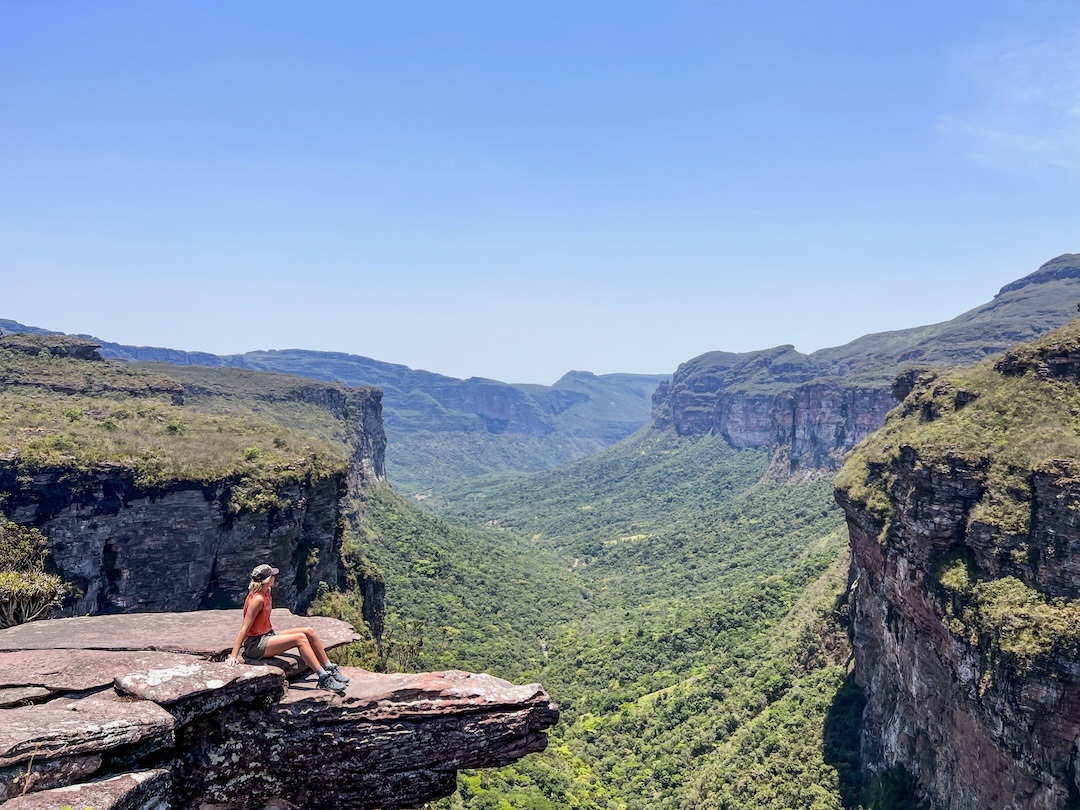
Preparing for Multi-day Treks like the Vale do Pati
If you have never hiked carrying a heavy pack, getting used to just walking around with a weight is the first step. Introducing step-ups or weighted steps will also help strengthen the leg muscles needed for trekking.
Going on long and short local hikes (with and without packs) will build your inner hiker confidence.
If you don’t live in a region with hiking areas or mountains, one of the best substitutions is walking at an incline on a treadmill or spending time on the Stairmaster.
A young man staying at Igrejinha the same night as we called it quits after his second day on the trek. The heat, mileage, and terrain were tougher than he expected.
These types of trips aren’t for everyone and it is important to be honest about your level of fitness before investing money and time into a trek.
Where to go from Chapada Diamantina
From the Vale do Pati and Chapada Diamantina there are many fantastic destinations to visit in Minas Gerais and Bahia, Brazil.
Historic cities like Salvador and Ouro Preto, the modern gastronomic capital of Belo Horizonte, and the island paradise of Morro de São Paulo are fantastic destinations in Minas Gerais and Bahia.
See more guides and itineraries in Brazil.
The Vale do Pati trek doesn’t get the same international notoriety as the W Trek or Inca Trail in South America, but it absolutely should! The trek delivers what all hikers crave – tough mental and physical tests alongside unrivaled natural beauty. The Vale do Pati’s deep, swooping canyons and towering cliffs can’t be topped in Brazil.
Have a favorite trek in Brazil? Let us know in the comments!
More places in Brazil to love


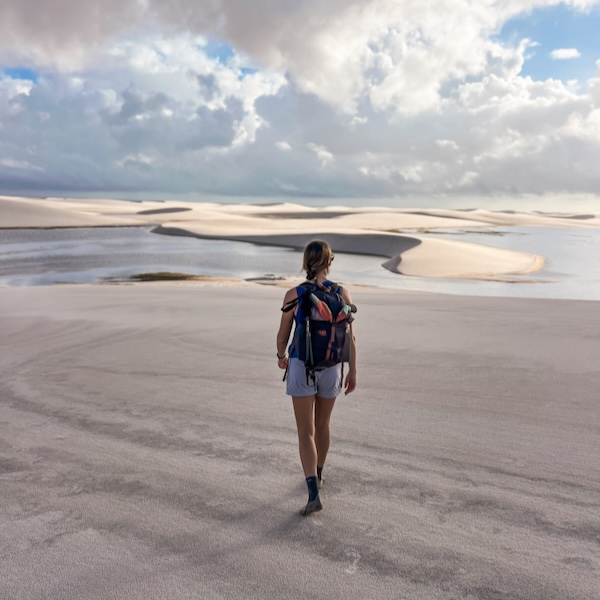
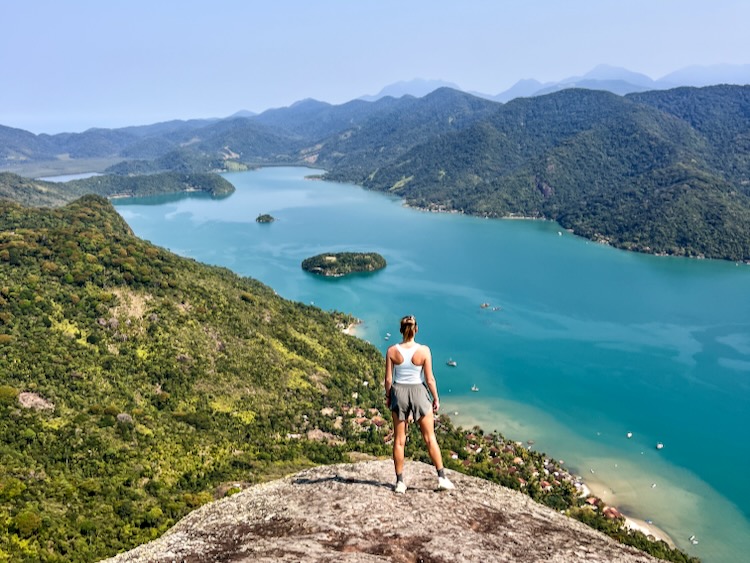
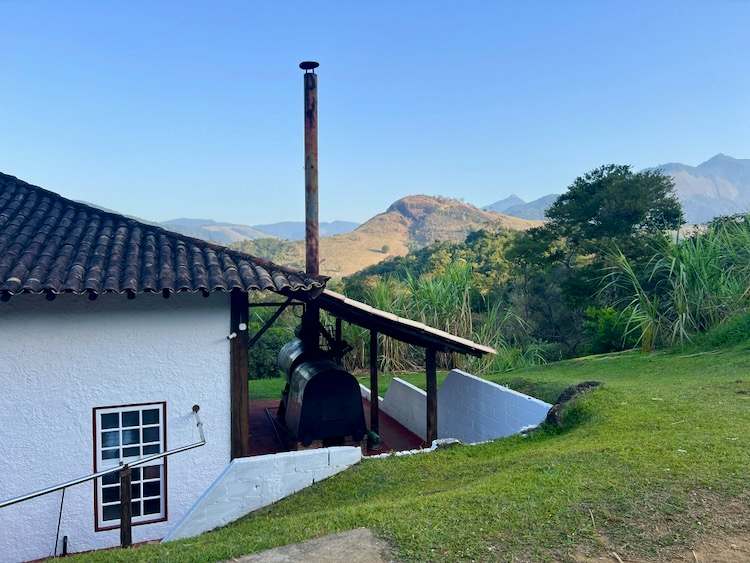
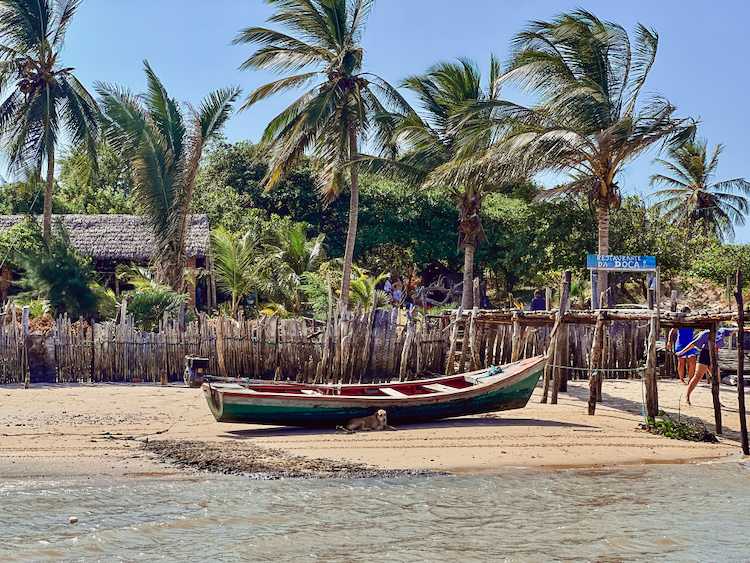
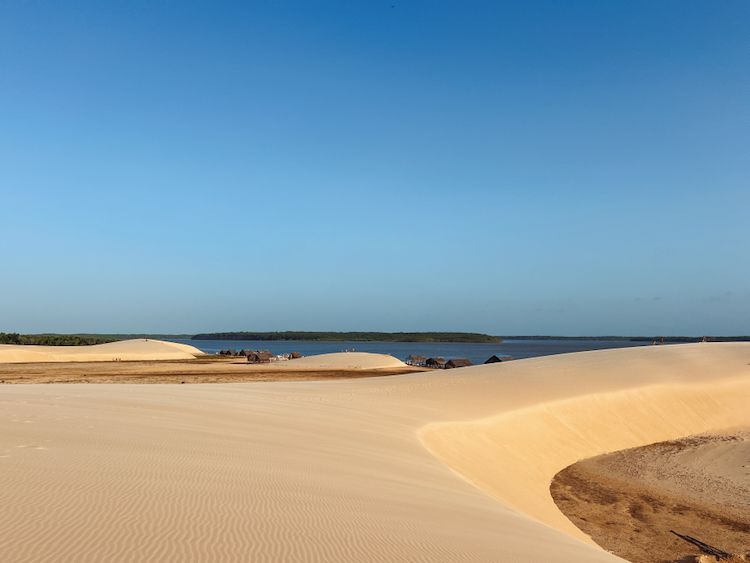
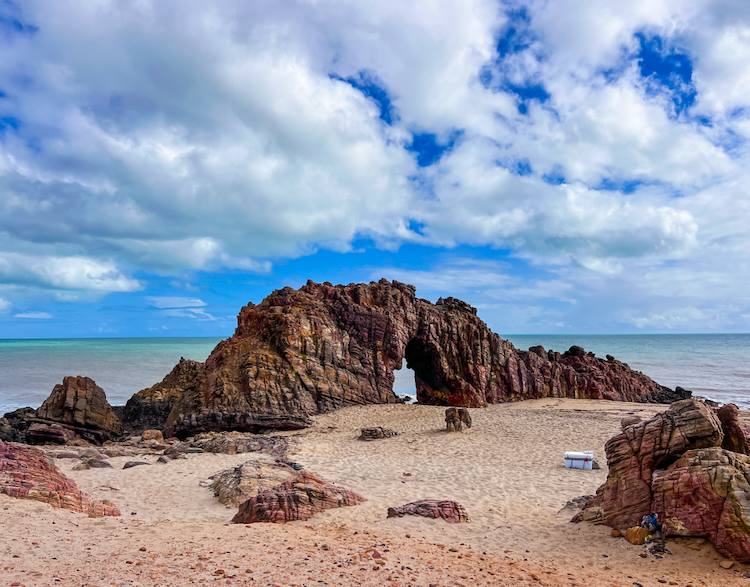

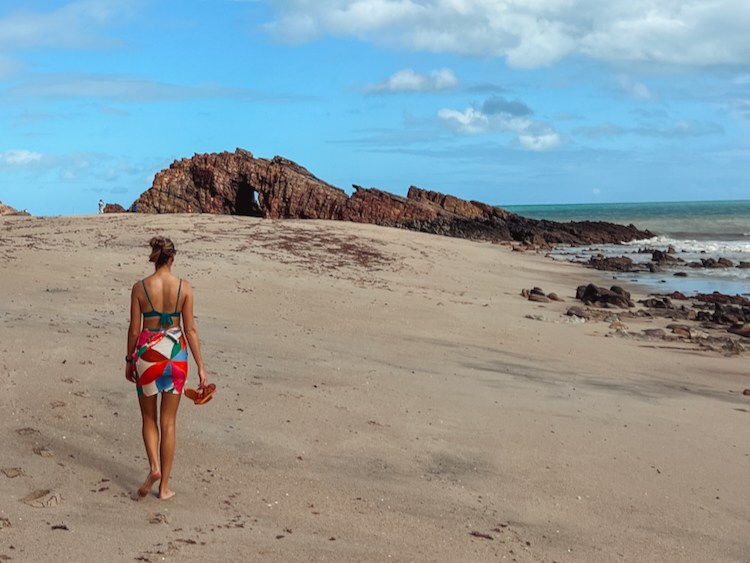
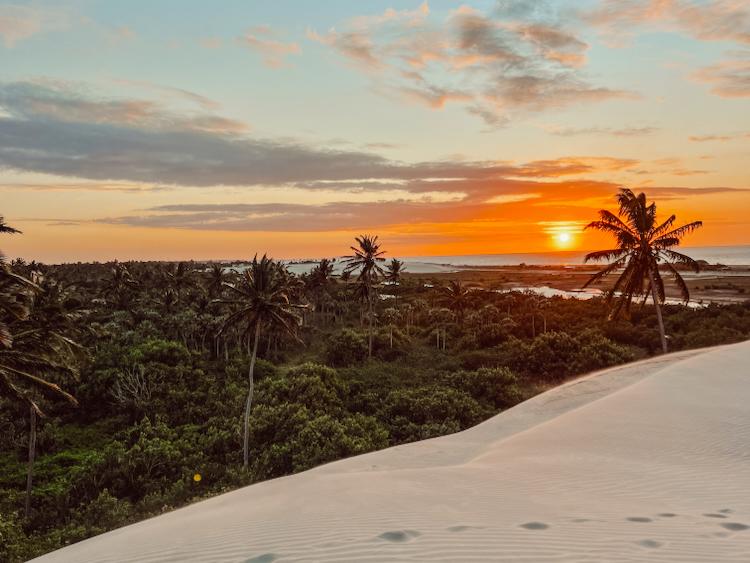
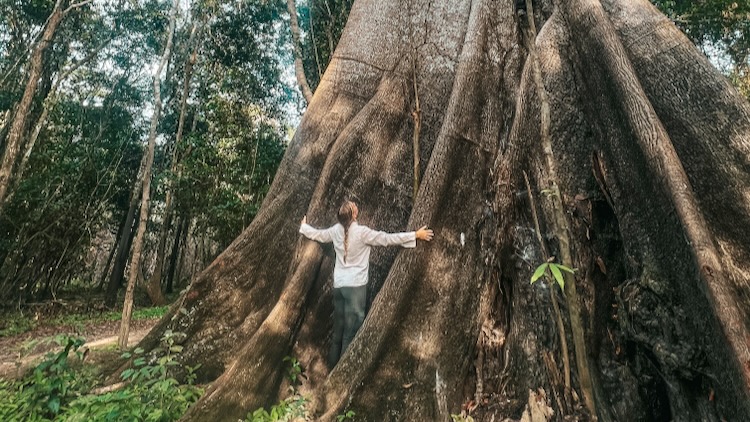
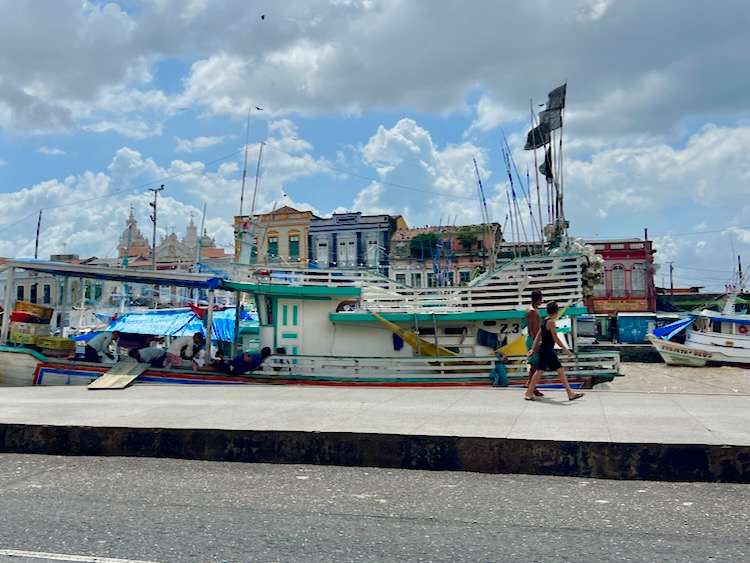
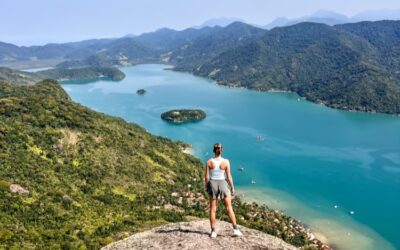
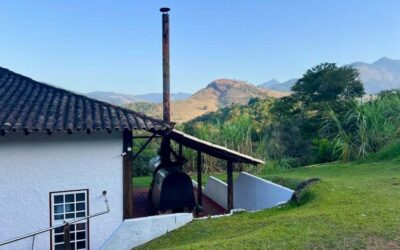
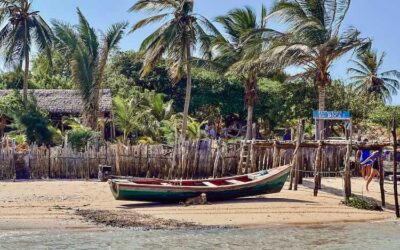
0 Comments